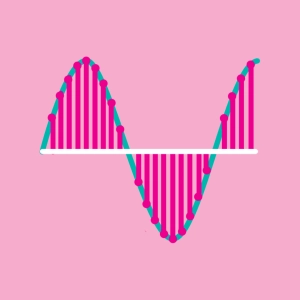 Analog to Digital Conversion
Analog to Digital Conversion
The digitization of an analog signal is carried out by taking several samples and translating them into binary code. The series of codes thus obtained are then regrouped in a digital file. The advantage of such digitization lies in the ability of such file formats to undergo processing by a computer. In order to obtain a digitization that corresponds to the original analog signal one must gain precision.
To do this, it is sufficient to increase the sampling frequency and decrease the pace of quantization.
Click on the graph or the data of the digital output file.
